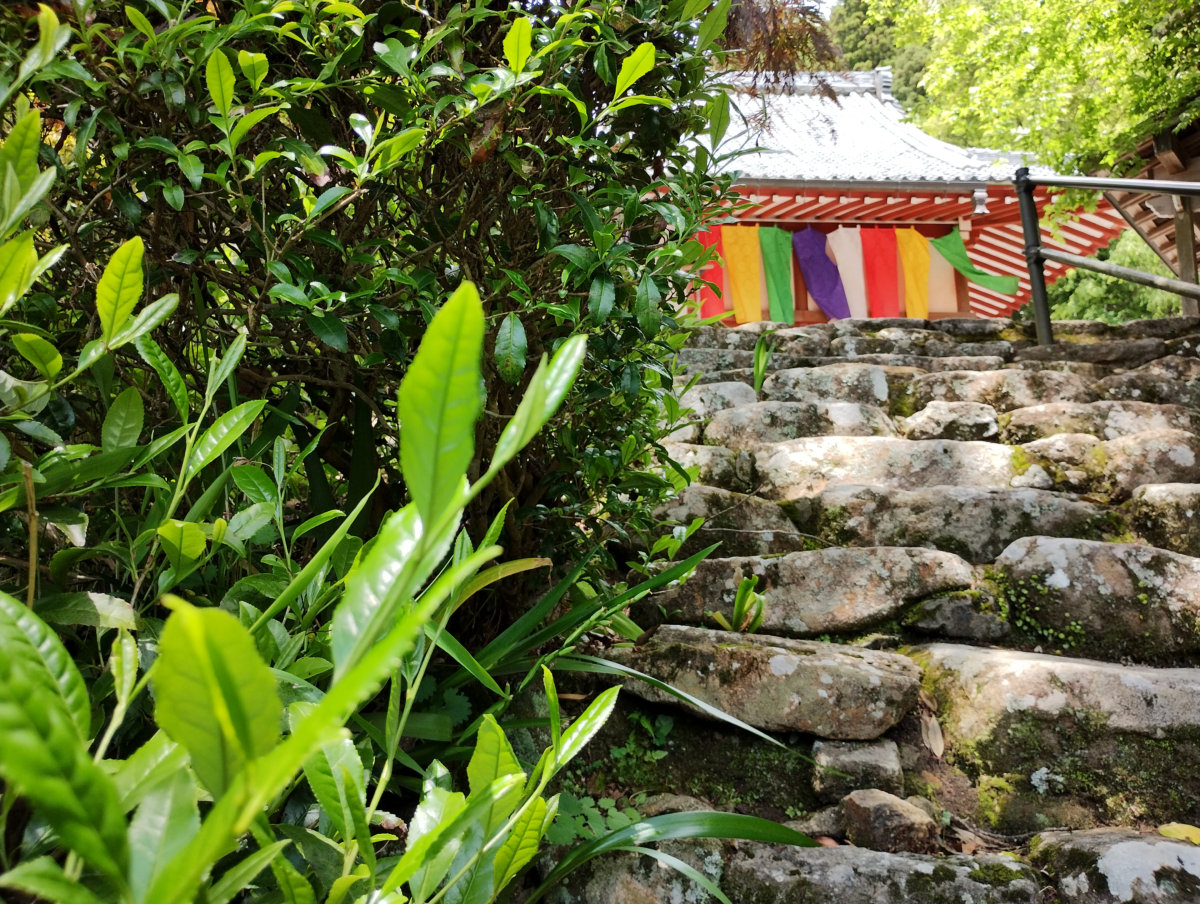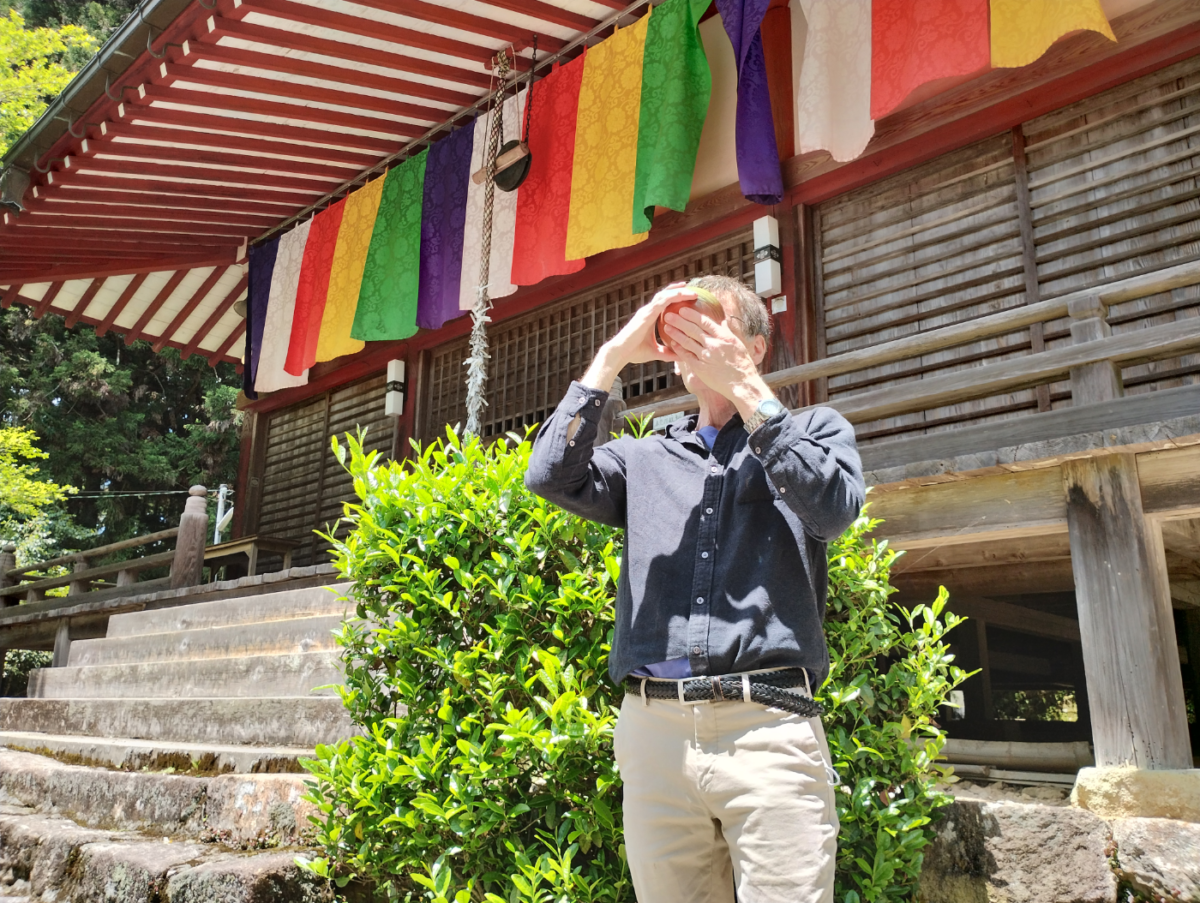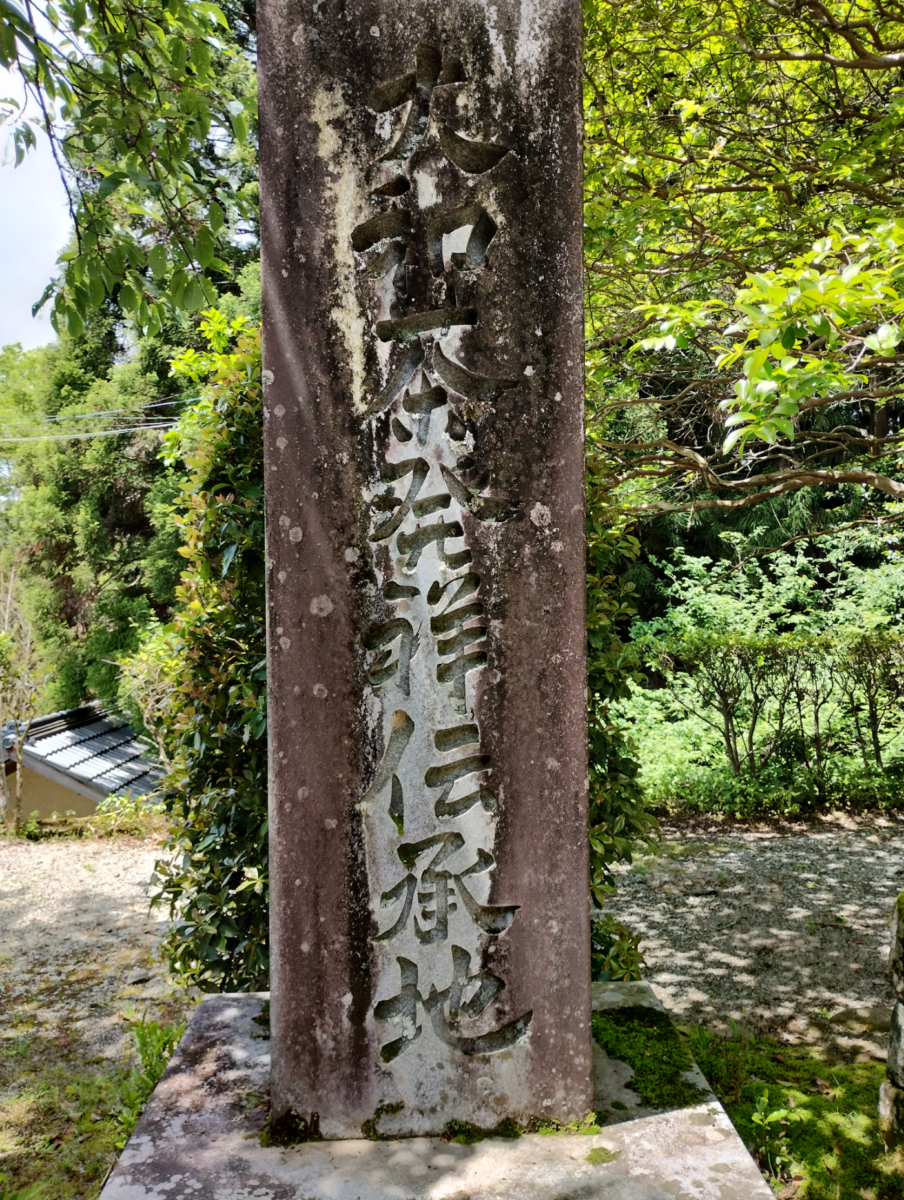
Drinking Tea History in Nara, Japan
To savor Japanese tea history in the region where it was first grown, I embarked on a tea pilgrimage to Butsuryu-ji Temple in Uda City, Nara Prefecture. The wealth and depth of tea culture exceeded my expectations.
Many believe that the famous Japanese Buddhist monk Kukai (774 –835) brought the first tea seeds to Japan in AD 806 after returning from studying Buddhism in China during the Tang Dynasty. Revered for founding the Shingon School of Buddhism, authoring influential texts, and inspiring pilgrimage trails, Kukai also significantly contributed to the spread of tea across Japan. Legends say he first grew tea in the Yamato Highlands.

A disciple of Kukai named Kenne founded the Butsuryu-ji Temple in AD 850 on the steep slopes above present-day Uda, a city of 40,000. Kenne sowed some of Kukai’s seeds around the temple, and they flourished in the Yamato region’s cool, picturesque highlands, part of which is now called Nara prefecture.
Walking in and around the remote temple, I discovered tea plants that could be descendants of Kukai’s seeds.
The temple grounds are a treasure trove of historic tea memorabilia. There are statues of Kukai and Kenne and artifacts so significant to Japanese heritage that the national and local governments registered them as important cultural properties. Kenne’s gravestone is within the temple grounds.

Despite the noteworthy cultural importance of the temple, my local guide and I were the only visitors on a pleasant sunny day.
Strolling with the temple’s head monk, Takaaki Suzuki, I observed tea plants along the path leading to a stone stairway below the main temple. Monk Suzuki brought me to a historic monument in front of the temple hall.
Japanese kanjis are carved into the several-meter-high rectangular block of stone, signifying that this location is the birthplace of Yamato tea.
The monk told me that forty years ago, he and some tea-loving friends dug a hole at the monument’s base and buried 200 grams of high-quality gyokuro tea from Uji, Ureshino, Sayama, Shizuoka, and Yamato. They thought someday someone might dig up the tea time capsule and compare the teas, but no one has, and the tea remains underground, sealed in airtight containers.
Monk Suzuki, now probably in his seventies, slid aside the main temple hall’s thick, heavy wooden doors. The ancient countryside temple preserved centuries-old statuary and other priceless works of art that exist nowhere else in the world, including the original stone tea grinding mill Kukai carried with him on a ship from China to Japan.
Lugging the approximately fourteen-century-old stone mill between countries must have required tremendous effort. A kiren (kirin), a mythical being symbolizing purity and justice, was carved onto the grinder’s side. Kirin are also omens of good fortune.
Butsuryu-ji Temple
Hours: Open 9 am to 4:30 pm
Entrance fee: 200 yen (US$1.35). A guided tour of the main hall of the temple is 300 yen.
Directions
By Auto: Input “1684 Akabane, Haibara, Uda City, Nara Prefecture” into your navigation system. It is located approximately four kilometers southwest of Murō-ji across Mount Murō.
By Train and Bus: From Nagoya, Osaka, or Kyoto, take a train to Kintetsu Haibara Station, go to bus stop No. 2 near the south exit, board the Ouda Wakuwaku bus, get off at Takai (高井), and walk for 40 minutes.
For additional information on Nara tea and other beautiful places worth experiencing, explore the
East Nara Nabari Tourism site: https://enntourism.com
Butsuryi-ji Temple (Trip.com)
It was a beautiful work of functional art that must be worth a fortune. I wondered why this valuable tea mill was not in a museum where high-tech security could protect it. One of Japan’s charms is encountering fantastic treasures in countryside locations.
After my temple tour finished, the monk’s wife approached, smiled deeply, and asked if we would like tea. She led us to a simple wooden table, asked us to wait, and left us to brew tea.
She reappeared with two rustic ceramic bowls of thick matcha, almost the same color as the leaves on the nearby tea plants, and she suggested we slowly enjoy the moment. I was captivated by tree-scented air and bird calls emanating from the breeze-stirred branches of tall green cedar trees beneath a blue sky. We savored each mouthful, allowing the natural flavor to refresh our senses.
Then, I decided to do something that made sense to me, but most Japanese would never do since quietly sitting and drinking matcha is the cultural norm.
Carefully holding my ceramic tea bowl, I walked back up the hill and stood in front of the temple’s main hall to sip the matcha while offering thanks to Monk Kukai and his disciple Kenne for introducing tea to the culture of this nation and more than a thousand years later to me. It was a moment of pure gratitude.
Afterward, as we descended the narrow winding roads through the mountainous countryside, panoramic views of the outskirts of Uda City and the Yamato Highlands opened up. Many old homes and farming communities still exist in this verdant agricultural area.
Some farmers still grow organic tea and process tea by hand, following centuries-old techniques. In nearby Yamazoe village, organic farmers teach workshops on hand-processing local tea. Foreigners are welcome to join the locals.
Night and day temperature variations, fertile soil, and fresh mountain springs and streams make for optimal tea-growing conditions, resulting in a smooth flavor and a unique, delightful aroma.
Tea Market
Get More Value from Your Tea: BRU Maker One
+41794574278
Jacque's Organics
(647) 804-7263
Lovely story and good to know the history
Thank you for your comment.
Greatly appreciating your ‘tribute tea-drinking’ in front of the old tea mill in an act of gratitude.
Lovely Sunday morning reading here in a dank dark and rainy Somerset – but tasting and being restored by your words of ‘green’. Thank you.
An enjoyable historical tour through the present day setting.